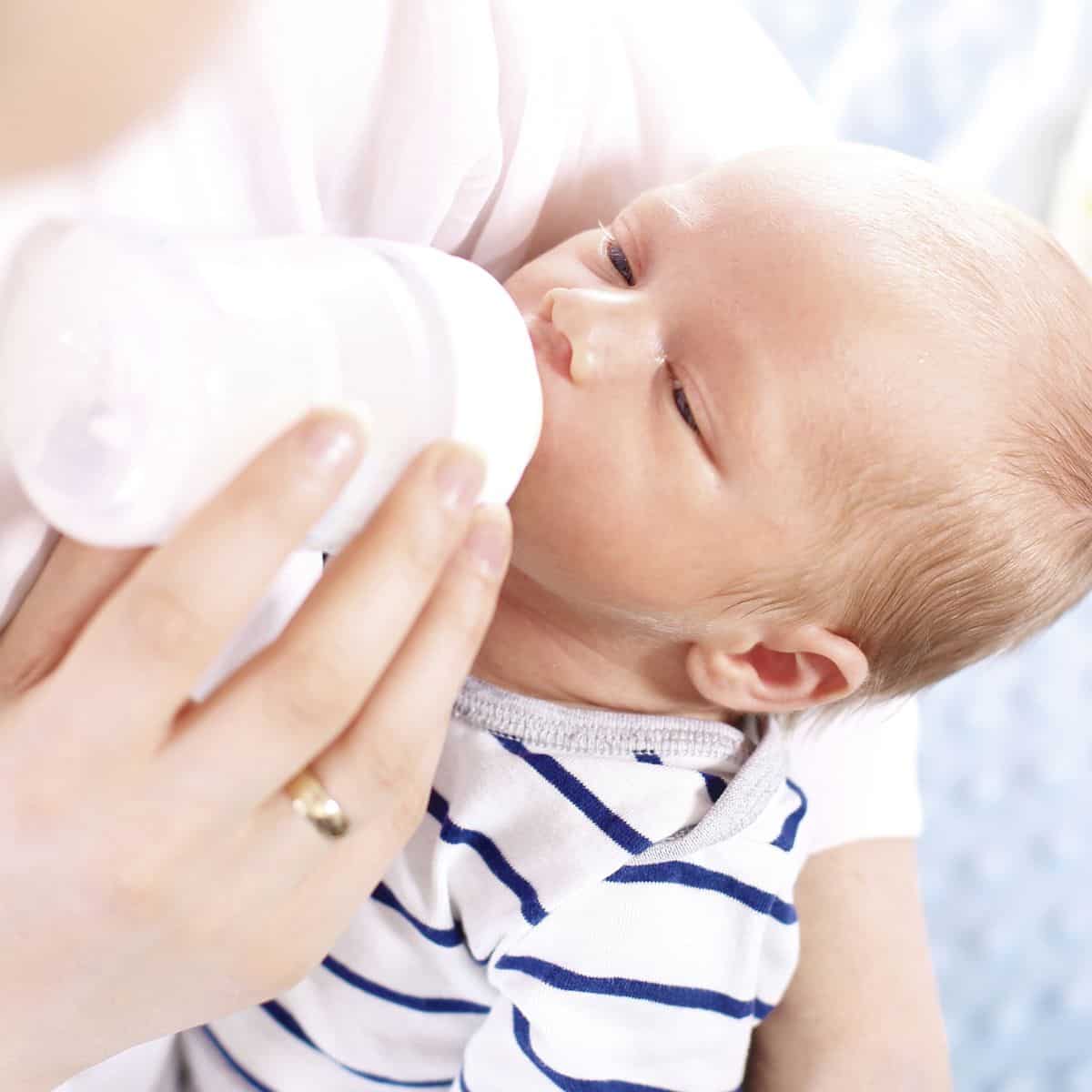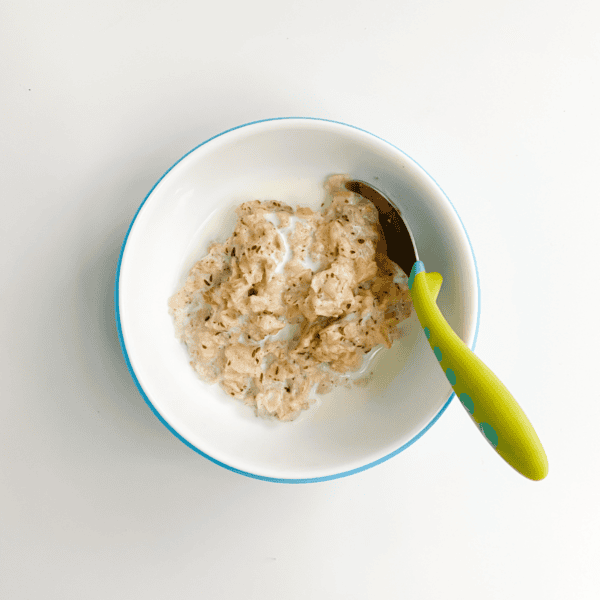US or EU? We’re Comparing Baby Formula Ingredients.
Mar 22, 2023, Updated Feb 25, 2025
This post contains affiliate links. Please see our disclosure policy.

Anything European just sounds…better. You know?
Like, give me the Swiss chocolate. I’ll have the Belgian waffles. I’m pinning the Italian marble backsplash. So I’m not surprised that European baby formulas are in-demand, too.
And I’ve seen this trend going around social media with people talking about how there are certain ingredients banned in Europe that aren’t banned in the US.
But are those European infant formulas actually better for babies? Or does their European, cool-kid status just make us want them for our littles?
The answer lies in their ingredients!
Table of Contents
- European Baby Formula Brands Are Becoming Popular
- Is European Baby Formula Nutritionally Superior?
- US vs. EU: Baby Formula Ingredients
- US vs. EU: Alternative Milks & Protein Sources
- US vs. EU: Sugars in Baby Formula
- Are European Baby Formulas Regulated?
- Additives in US and European Baby Formula
- Importing Baby Formula Into The US Is Okay—But Be Cautious!
- So…Should you buy US or European Infant Formula? It Depends!
- A note on choosing the best formula
- Are you ready to start solids?
European Baby Formula Brands Are Becoming Popular
If you’re in the world of baby formula, you’ve probably heard that many US parents are importing baby formula into the US from Europe. There are a few reasons why this is a thing but mainly, there’s an overall perception that European formula brands are of higher quality or use higher-quality ingredients. In other words, people think they’re nutritionally superior. I’m pretty sure this perception mostly stems from the fact that Europe has tighter regulations around the additives allowed in baby formula.
But On The Other Hand…
But while the “nutritionally superior” perception is leading to an uptick in American parents using imported formulas, it’s not the only perception going around! You might have also heard the complete opposite—that European formulas actually lack certain ingredients or micronutrients. Or, that they’re not approved by the FDA.
Well, stress no further, mama.
Google no more, dad!
I’m going to unpack all these perceptions and give you a comprehensive picture of European and US formulas, so that you and your pediatrician can make the most informed choice.
Is European Baby Formula Nutritionally Superior?

Even though there’s so much talk about whether US or European baby formula is better, the answer is that, at least nutritionally, they’re really similar!
US vs. EU: Baby Formula Ingredients
Both US and European formula brands have all the ingredients in them that we know promote growth and health from infancy to age 1. The only difference is that where US formulas are all created to meet babies’ nutritional needs through their first year of life, many European formulas break their formulas down into 2 age groups: 0-6 months and 6-12 months. There are some minor differences between those groups, like iron (more on this below)—but none I’d want you to worry about.
US vs. EU: Alternative Milks & Protein Sources
One other difference is that Europe has more baby formula options made with alternative protein sources. In the European markets, there are more goat milk formulas available than what we have here in the US. And, there are also baby formulas made with milk from pasture-raised cows and whole milk, versus cow’s milk that’s had fat removed and been fortified with other fat sources like oil—which is what’s most common in the United States.
US vs. EU: Sugars in Baby Formula
Another good thing to note is that the EU bans corn syrup as an ingredient in baby formula, but the US doesn’t. In its place, European formula brands are mandated to make sure 30% of the carbohydrate content in their formulas comes from lactose. Lactose is a type of natural sugar, and it is the main carbohydrate found in breastmilk. So, its use in formula is to mimic breastmilk more closely.


Are European Baby Formulas Regulated?
Yes! The European equivalent of the U.S. Food & Drug Administration is the European Food Safety Authority (EFSA), and the way they vet baby formula is very similar to the way the FDA does. Actually, in some ways, they might be even more stringent than the FDA! So if you’re deciding between US and European formula for your baby, don’t let the myth that one or the other isn’t regulated influence your decision. They’re all regulated—it’s just that European formulas aren’t regulated by the FDA.
Additives in US and European Baby Formula
Additives might sound like a bad word—it’s not! Many of the additives in infant formula are essential for your baby’s growth and development. So these are good adds!
That said, the US and Europe don’t always use the same additives or the same amounts of the additives they use. There are a few key differences, mainly in DHA, iron, and thickeners like gums and carrageenan.
#1 DHA
European formula brands are now required to add DHA, which is an Omega-3 fatty acid that’s essential for babies’ brain development. A lot of US infant formula brands choose to add DHA, but it’s not required. (I personally recommend that you DO choose a formula with DHA!)
#2 Iron
Many European formula brands have lower amounts of iron in them compared to US formulas. This is because the American Academy of Pediatrics sets higher iron level needs for infants than the European Academy of Paediatrics does. If your child is on European formula, your pediatrician may recommend an iron supplement or an increase in iron-rich foods past 6 months of age.
#3 Thickeners
Another difference between US and European formulas is that European brands don’t use gums or carrageenan to thicken their products, whereas US brands do.
Big disclaimer here: Using thickeners isn’t bad! They are recognized as safe additives at the concentrations in which they’re found in baby formula and other food products. So I’m not sharing this to scare you in any way! I’m just laying out this information in case it’s important to you or you prefer to avoid thickeners.

Importing Baby Formula Into The US Is Okay—But Be Cautious!
You can safely import baby formula from Europe into the US. But you need to be cautious about it. The safety of the actual product is the biggest concern. Even though European baby formula is regulated, it’s regulated by the EFSA. That means the FDA doesn’t personally regulate them or their distribution, and can’t know if they’ve been stored or shipped safely. Since the FDA can’t guarantee that they’re safe, they don’t recommend buying them. And this puts the safety on you as the parent.
Safety Tips for Importing Formula
- If you’re buying an EU formula, buy from a reputable seller. No obscure Amazon sellers, please!
- Don’t buy from anyone secondhand or who personally imports products. There are real risks and some seriously sketchy vibes here.
- Get formula directly shipped to you—either from the company, an approved seller, or a reputable US company warehouse.
If you know you want European baby formula, check out this list of the Best European Baby Formulas by Baby Formula Expert.
So…Should you buy US or European Infant Formula? It Depends!

First of all, it is always a good idea to talk with your pediatrician about any concerns or questions you have about baby formula.
If you’ve done that and you’re still deciding, know that both US and European infant formulas are relatively similar, especially nutritionally. Baby formula is heavily regulated too, so (as long as you purchase one that is regulated), you can rest easy knowing it has what your baby needs to grow and thrive.
The real differences between US and EU formula brands lie in your values as parents around the protein sources you’re comfortable with, the ingredients you seek out, and any ingredients you prefer to avoid. Budget will be a factor, too.
If you’re looking for the best baby formula out there, it’s good to know that there are some very high-quality US brands on the market now. Many that have launched recently are nearly identical to European formulas and have garnered a lot of attention and support like Bobbie (which calls itself a European-style formula), ByHeart (which is made in the United States), and Kendamil (which was originally from the UK). So you might not have to import from Europe to find one that aligns with your values!
A note on choosing the best formula
The best formula is the one that your baby tolerates well and fits into your budget. You may have your heart set on one particular formula, and then find that your baby gets extra gassy, or has more spit up, or gets constipated. That is not in your control, and it’s okay if you have to switch to a formula that wasn’t your first choice. It’s really hard to anticipate how your baby will do with a specific formula, so you may have to try more than one before you find the best fit for their digestive system.
Related: [Podcast] Weaning Off Breastfeeding with Lactation Consultant Erica Campbell
Are you ready to start solids?
I’ve got you covered here, too! Check out my article, The Ultimate Guide to Baby’s First Foods from 4-6 Months Old for a deep dive on when to serve solids, how to decide between purees and baby-lead-weaning, the best foods to serve, safety for starting solids and advice on how to start solids for babies with allergies.

Still want more? Download my Starting Solids Quick Guide for FREE to streamline the process and give you all the information you need to take this step confidently. This is for you whether you want to try baby-led weaning, start with purees exclusively, or do a mix of both!














